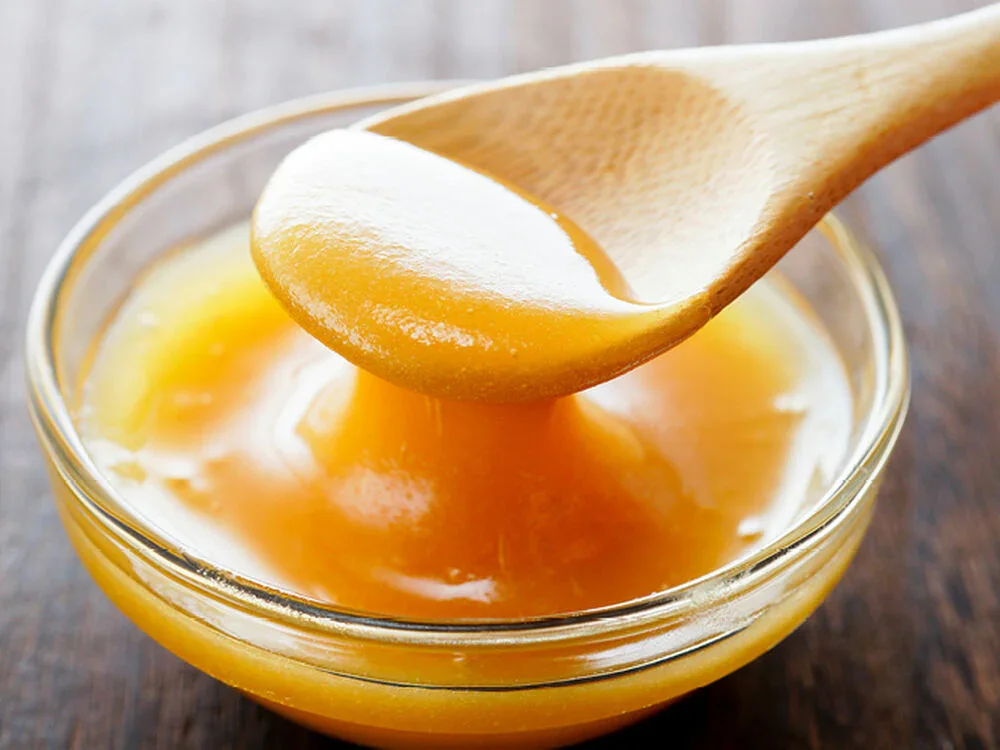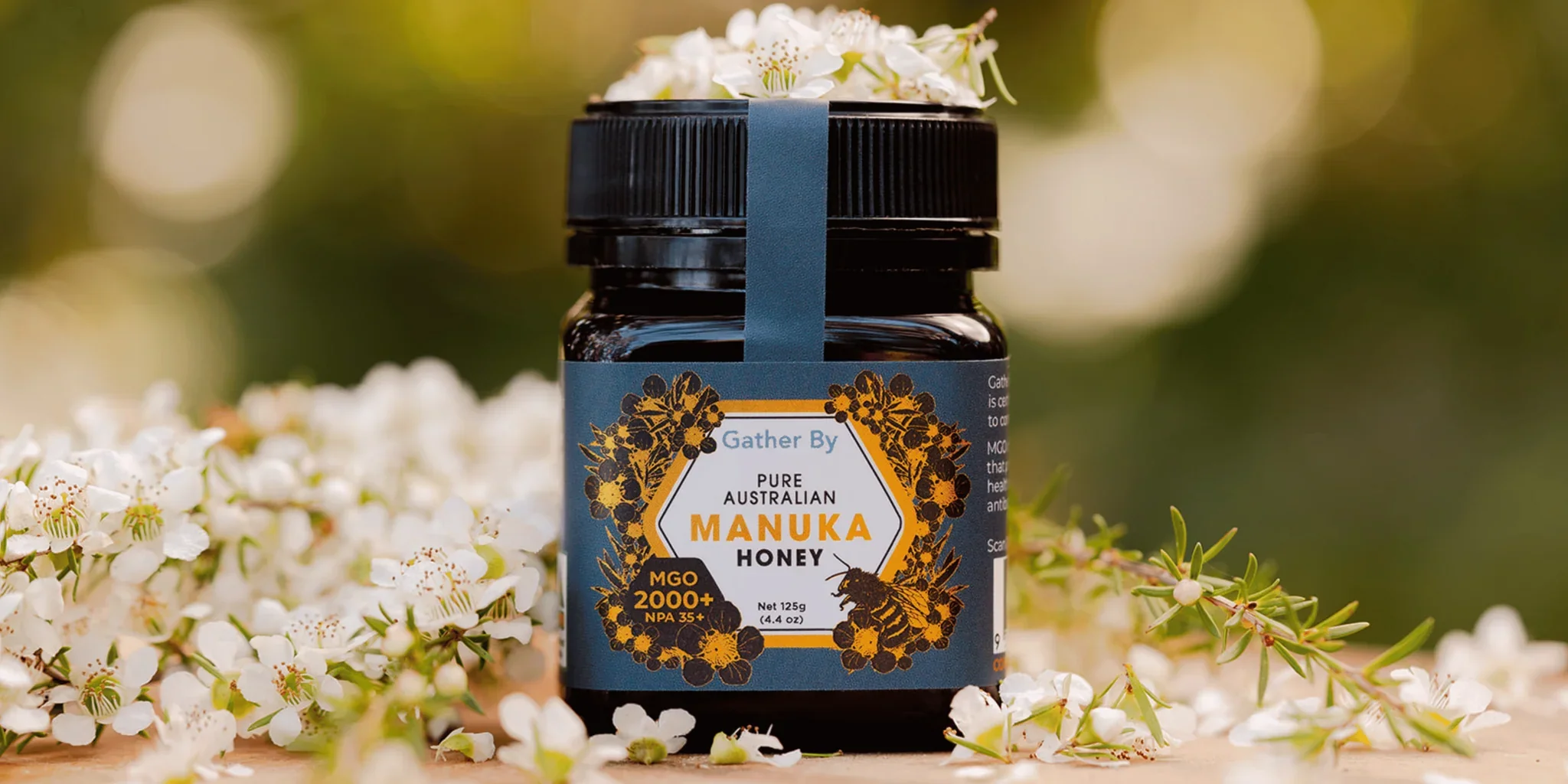Honey, Manuka
Medicinal Profile of
Honey, Manuka
Manuka Honey is produced when bees pollinate the flowers of the manuka tree (Leptospermum scoparium), a native shrub of New Zealand and southeastern Australia. The manuka tree (Leptospermum scoparium) itself is highly medicinal, not just the honey. In fact, the honey’s special activity comes directly from the chemistry of the manuka flower nectar. The nectar of manuka flowers contains dihydroxyacetone, which converts into methylglyoxal (MGO) in the hive. MGO is the unique compound that gives manuka honey its non-peroxide antimicrobial activity, distinguishing it from regular raw honey. While all raw honeys soothe, nourish, and protect, manuka honey has been clinically validated for wound care, oral infections, and gastrointestinal issues where microbial resistance is a concern. In whole-person health, manuka honey is best seen as a targeted antimicrobial and tissue repair agent, rather than an everyday nutritive sweetener.
-
👉 Tastes describe the initial impression a food leaves on the tongue, and they reveal its deeper actions in the body, shaping digestion, circulation, and tissue response.
Sweet – Moistening, harmonizing, restorative.
Slightly bitter/earthy – Reflects its antimicrobial potency; gives it a stronger “clearing” edge than light honeys.
-
👉 Qualities describe the felt nature of a substance or practice, and how it acts in the body beyond nutrients or chemistry.
Moistening (moderate) – Soothes dry or irritated tissues.
Heavy / Grounding – Anchors vitality, restorative in depletion.
Clearing – Antimicrobial and detox-supportive, reduces microbial burden.
Sticky (in excess) – May burden metabolism if overused.
Small, medicinal doses → targeted → acts clearing (damp + infection patterns).
Excess use as food/sweetener → adds to dampness/metabolic sluggishness (especially in hypofunction terrain).
-
👉 Terrain patterns describe the body’s functional state, showing when a food is most helpful or aggravating, while affinities identify the organ systems or tissues where its actions are most directly felt.
👉 To learn more about these patterns in depth, read this blog.Fluid Congestion with Infection (Primary Indicated Terrain Pattern) – When dampness, mucus, or stagnant fluids allow microbes to take hold.
Integumentary System (Affinity) – Wound-healing, antimicrobial, tissue repair.
Oral Cavity (Affinity) – Reduces gingivitis, mouth ulcers, gum infections.
Warranted: Applied topically to wounds or taken by spoon for oral/gut microbial balance. Dose: Topical layer directly on wounds (medical grade preferred); ½–1 tsp orally 1–2x daily.
———————————————————
Hyperreactivity (Secondary Indicated Terrain Pattern) – When immune tissues are inflamed, irritated, or overreactive.
Digestive System (Affinity) – Supports healing in ulcers, gastritis, H. pylori overgrowth.
Immune System (Affinity) – Modulates overreaction while reducing microbial triggers.
Warranted: Oral use for short-term therapeutic support.
Dose: ½–1 tsp once daily for 1–2 weeks during active flare. -
Topical wound dressing – Direct application or medical-grade sterile manuka honey for burns, ulcers, infections.
Oral spoonful – For gum health, sore throats, or GI microbial balance.
Lozenges / oral products – Target localized infections or irritation in the mouth/throat.
-
👉 Nutritional values give the measurable nutrients that a food contributes to the diet.
🍯 Nutritional Value of Manuka Honey (per 100 g)
Calories: ~330 kcal, Carbohydrates: ~82 g, Sugars: ~82 g (fructose ~38 g, glucose ~31 g, maltose ~7 g, sucrose ~1–2 g), Protein: ~0.3 g, Fat: ~0 g, Potassium: ~50 mg, Calcium: ~6 mg, Magnesium: ~2 mg, Phosphorus: ~4 mg, Trace zinc, iron, manganese (tiny amounts, <1 mg), Polyphenols / antioxidants: higher than most honeys (flavonoids, phenolic acids)., MGO (methylglyoxal): therapeutic compound, ranges widely (30–700+ mg/kg depending on UMF rating).
-
Integumentary System (Skin)
Wound-healing – Promotes granulation and repair in chronic or infected wounds.
Antimicrobial – Active against resistant microbes, including MRSA.
Anti-inflammatory – Reduces swelling, irritation, and redness at wound sites.
Oral Cavity / Dental
Antibacterial – Reduces plaque and gingivitis.
Healing – Soothes mouth ulcers, post-surgical irritation.
Digestive System
Anti-ulcer – Protective in gastritis and H. pylori infection.
Soothing – Coats mucosa, calms irritation.
Immune System
Immune supportive – Reduces microbial load that fuels immune reactivity.
Antioxidant – Protects tissues during infection and inflammation.
-
Methylglyoxal (MGO) – Key compound; antimicrobial, stable to heat and light.
Dihydroxyacetone (DHA) – From manuka nectar, precursor to MGO.
Leptosperin – Unique marker compound, quality assurance for manuka honey.
Hydrogen peroxide (low levels) – Mild antimicrobial, but secondary to MGO.
Sugars (fructose, glucose) – Provide osmotic antimicrobial effect.
Polyphenols & flavonoids – Antioxidant, anti-inflammatory.
-
Second to Third Degree – Stronger than regular honey in antimicrobial and wound-healing potency; requires mindful use for targeted situations.
-
Antidiabetic medications – May interfere with blood sugar control.
Topical antibiotics – May act synergistically.
Avoid with immunosuppressive therapy unless guided.
-
Infants under 1 year – Contraindicated (risk of botulism).
Diabetes / metabolic syndrome – Caution with internal use.
Excess daily use – May burden digestion and metabolism.
Topical use – Safe, especially in medical-grade sterile form.
-
Traditional Sources
Maori traditional medicine – Manuka tree used for wounds, infections, digestive issues.
Folk practice – Manuka honey applied to sores and wounds for cleansing and healing.
Modern Sources
Molan, P. C. (2001). “The potential of honey in the treatment of wounds and burns.” Am J Clin Dermatol, 2(1), 13–19.
Mavric, E., et al. (2008). “Identification and quantification of methylglyoxal as the dominant antibacterial constituent of Manuka honey.” Mol Nutr Food Res, 52(4), 483–489.
Carter, D. A., et al. (2016). “Therapeutic Manuka honey: No longer so alternative.” Front Microbiol, 7, 569.
USDA FoodData Central (2024). Nutrient data for honey, specialty varieties.



